Do you have a question about the HP ProLiant DL360p Gen8 and is the answer not in the manual?
Overview of the HP ProLiant DL360p Gen8 Server's capabilities and design.
Details on components located on the front of the server, including drive bays and ports.
Details on components located on the rear of the server, including expansion slots and I/O.
Identifies key components on the server's main circuit board.
Explains the layout and identification of memory module slots.
Describes the function and settings of the system maintenance switch.
Explains the purpose and use of the NMI jumper for memory dumps.
Details the various LEDs on the Systems Insight Display for status indication.
Explains LED status combinations for system diagnostics and alerts.
Identifies numbering for server components like drives and bays.
Explains the meaning of the status LEDs on the hard drives.
Information on fan module installation and configuration for cooling.
Instructions for turning on the server.
Steps for safely shutting down the server.
Procedure for extending the server from its rack mounting.
Instructions for safely removing the server from the rack.
How to access and view the server's diagnostic display.
Steps to remove the server's outer access panel.
Steps to reinstall the server's outer access panel.
Procedure for removing the FBWC capacitor pack.
Steps for removing the PCI riser cage.
Steps for installing the PCI riser cage.
Overview of HP Care Pack services for installation and support.
Information on resources for rack installation planning.
Guidelines for selecting an ideal installation environment.
Specifies clearance and ventilation needs for rack installation.
Details the acceptable operating temperature range for the server.
Information on electrical power needs and compliance.
Guidelines for proper electrical grounding of the server.
Instructions for connecting a DC power cable.
Safety warnings related to rack installation and stability.
General guidelines for installing multiple hardware options.
Instructions for installing processors and fan modules.
Information on supported memory types and configurations.
Best practices for adding or replacing hot-plug hard drives.
Steps to remove a drive bay blank.
Procedure for installing a hot-plug hard drive.
Instructions for installing optical drives.
Information on the server's embedded storage controller.
Steps to install the cache module.
Procedure for installing the FBWC capacitor pack.
Instructions for installing a front video adapter.
Steps for installing the Flexible LOM network adapter.
Instructions for installing expansion boards.
Details on installing redundant power supplies.
Instructions for installing a 48V DC power supply.
Procedure for installing the rack bezel.
Information on installing and enabling the TPM.
Steps to physically install the TPM board.
How to save the TPM recovery key/password.
Steps to enable the TPM in the server's BIOS.
General guidelines for server and hardware option cabling.
Instructions for cabling the hard drive backplane.
Steps for connecting optical drives.
Information on connecting the chipset SATA cable.
Instructions for cabling the FBWC capacitor pack.
Overview of operating modes for software utilities.
Information on finding product specifications.
Introduction to the iLO Management Engine.
Details on the Integrated Lights-Out subsystem.
Overview of the Active Health System features.
Information about the server's event log.
Details on the server's embedded deployment tool.
Information on the server diagnostics utility.
Steps for using the system erase utility.
Details on remote support software.
Information on the server deployment scripting tool.
Overview of the SPP for software and firmware updates.
Information on the HP SUM utility.
Details on the RBSU configuration utility.
Instructions for navigating and using RBSU.
Description of the automatic system configuration.
Available boot options during server startup.
How to configure Advanced Memory Protection modes.
Procedure after replacing a system board.
Details on the Array Configuration Utility (ACU).
Information on configuring RAID arrays via ORCA.
Utility for upgrading system firmware (BIOS).
Feature for automatic server restarts upon OS errors.
Information on USB support in the server.
Explanation of the server's redundant ROM feature.
How to keep the server's software and firmware up-to-date.
Information on installing and updating device drivers.
Guidelines for updating software and firmware.
Tools for managing software and firmware versions.
Information on supported OS and virtualization software.
Overview of HP support and service offerings.
HP notifications for product changes.
Links to HP troubleshooting guides and documentation.
Steps to remove the system battery.
Links to safety and compliance documents.
Declaration for Turkey RoHS compliance.
Declaration for Ukraine RoHS compliance.
Links to HP warranty information.
Precautions to avoid ESD damage to system components.
Methods for proper grounding to prevent ESD.
Details on operating and non-operating environmental conditions.
Physical dimensions and weight of the server.
Information on the server's power supply options.
Specifications for the 460W CS power supply.
Specifications for the 460W CS HE power supply.
Specifications for the 750W CS power supply.
Specifications for the 750W CS HE power supply.
Specifications for the 750W DC CS HE power supply.
Specifications for the 1200W CS HE power supply.
Guidance on calculating power supply needs and loading.
Information to have ready before contacting HP support.
Contact details for HP support.
Overview of HP's Customer Self Repair program.
Overview of the HP ProLiant DL360p Gen8 Server's capabilities and design.
Details on components located on the front of the server, including drive bays and ports.
Details on components located on the rear of the server, including expansion slots and I/O.
Identifies key components on the server's main circuit board.
Explains the layout and identification of memory module slots.
Describes the function and settings of the system maintenance switch.
Explains the purpose and use of the NMI jumper for memory dumps.
Details the various LEDs on the Systems Insight Display for status indication.
Explains LED status combinations for system diagnostics and alerts.
Identifies numbering for server components like drives and bays.
Explains the meaning of the status LEDs on the hard drives.
Information on fan module installation and configuration for cooling.
Instructions for turning on the server.
Steps for safely shutting down the server.
Procedure for extending the server from its rack mounting.
Instructions for safely removing the server from the rack.
How to access and view the server's diagnostic display.
Steps to remove the server's outer access panel.
Steps to reinstall the server's outer access panel.
Procedure for removing the FBWC capacitor pack.
Steps for removing the PCI riser cage.
Steps for installing the PCI riser cage.
Overview of HP Care Pack services for installation and support.
Information on resources for rack installation planning.
Guidelines for selecting an ideal installation environment.
Specifies clearance and ventilation needs for rack installation.
Details the acceptable operating temperature range for the server.
Information on electrical power needs and compliance.
Guidelines for proper electrical grounding of the server.
Instructions for connecting a DC power cable.
Safety warnings related to rack installation and stability.
General guidelines for installing multiple hardware options.
Instructions for installing processors and fan modules.
Information on supported memory types and configurations.
Best practices for adding or replacing hot-plug hard drives.
Steps to remove a drive bay blank.
Procedure for installing a hot-plug hard drive.
Instructions for installing optical drives.
Information on the server's embedded storage controller.
Steps to install the cache module.
Procedure for installing the FBWC capacitor pack.
Instructions for installing a front video adapter.
Steps for installing the Flexible LOM network adapter.
Instructions for installing expansion boards.
Details on installing redundant power supplies.
Instructions for installing a 48V DC power supply.
Procedure for installing the rack bezel.
Information on installing and enabling the TPM.
Steps to physically install the TPM board.
How to save the TPM recovery key/password.
Steps to enable the TPM in the server's BIOS.
General guidelines for server and hardware option cabling.
Instructions for cabling the hard drive backplane.
Steps for connecting optical drives.
Information on connecting the chipset SATA cable.
Instructions for cabling the FBWC capacitor pack.
Overview of operating modes for software utilities.
Information on finding product specifications.
Introduction to the iLO Management Engine.
Details on the Integrated Lights-Out subsystem.
Overview of the Active Health System features.
Information about the server's event log.
Details on the server's embedded deployment tool.
Information on the server diagnostics utility.
Steps for using the system erase utility.
Details on remote support software.
Information on the server deployment scripting tool.
Overview of the SPP for software and firmware updates.
Information on the HP SUM utility.
Details on the RBSU configuration utility.
Instructions for navigating and using RBSU.
Description of the automatic system configuration.
Available boot options during server startup.
How to configure Advanced Memory Protection modes.
Procedure after replacing a system board.
Details on the Array Configuration Utility (ACU).
Information on configuring RAID arrays via ORCA.
Utility for upgrading system firmware (BIOS).
Feature for automatic server restarts upon OS errors.
Information on USB support in the server.
Explanation of the server's redundant ROM feature.
How to keep the server's software and firmware up-to-date.
Information on installing and updating device drivers.
Guidelines for updating software and firmware.
Tools for managing software and firmware versions.
Information on supported OS and virtualization software.
Overview of HP support and service offerings.
HP notifications for product changes.
Links to HP troubleshooting guides and documentation.
Steps to remove the system battery.
Links to safety and compliance documents.
Declaration for Turkey RoHS compliance.
Declaration for Ukraine RoHS compliance.
Links to HP warranty information.
Precautions to avoid ESD damage to system components.
Methods for proper grounding to prevent ESD.
Details on operating and non-operating environmental conditions.
Physical dimensions and weight of the server.
Information on the server's power supply options.
Specifications for the 460W CS power supply.
Specifications for the 460W CS HE power supply.
Specifications for the 750W CS power supply.
Specifications for the 750W CS HE power supply.
Specifications for the 750W DC CS HE power supply.
Specifications for the 1200W CS HE power supply.
Guidance on calculating power supply needs and loading.
Information to have ready before contacting HP support.
Contact details for HP support.
Overview of HP's Customer Self Repair program.
| Processor Sockets | 2 |
|---|---|
| Memory | Up to 768 GB DDR3 |
| Memory Slots | 24 DIMM slots |
| Form Factor | 1U Rack |
| Chipset | Intel C600 Series Chipset |
| Management | HP iLO 4 |
| Processor | Intel Xeon E5-2600 v1 or v2 series |
| Storage | Up to 8 x 2.5" or 4 x 3.5" drives |
| RAID Support | HP Smart Array P420i/1GB FBWC |
| Network | 4 x 1GbE |
| Network Controller | HP Ethernet 1Gb 4-port 331i Adapter |
| Power Supply | 460W, 750W, or 1200W hot-plug, redundant power supplies |
| Expansion Slots | 3 x PCIe 3.0 slots |
| Operating System Support | Red Hat Enterprise Linux, SUSE Linux Enterprise Server, VMware ESXi |
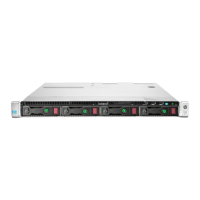
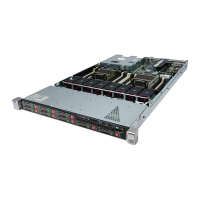
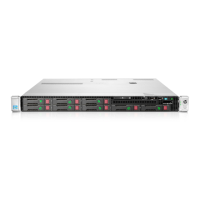
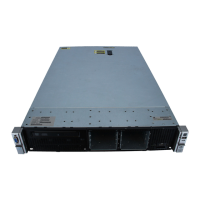
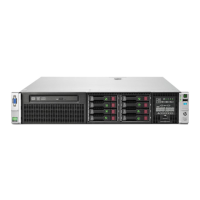
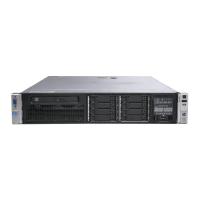
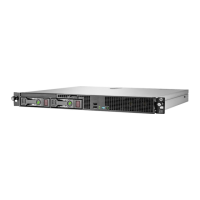
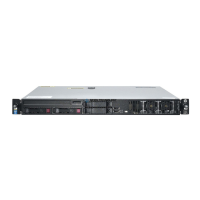
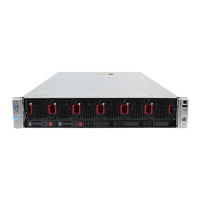
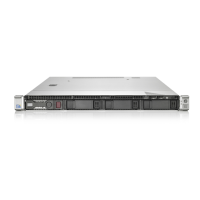
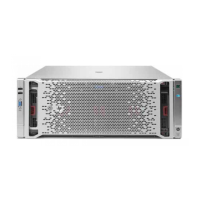
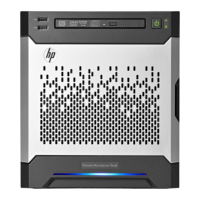
